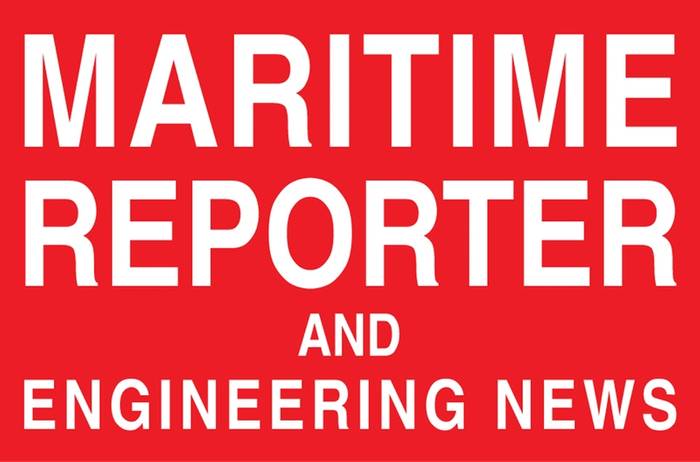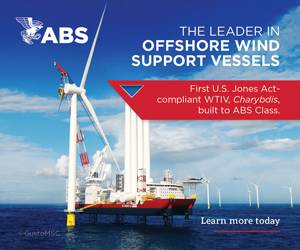Feature
Floating Wind Power
Floating Wind Set to Soar Despite Recent Setbacks
By Philip Lewis, Director of Research, Intelatus Global Partners
Equinor’s recently completed Hywind Tampen floating wind project features 11 concrete spar buoys supporting 8 MW turbines.
Credit: Ole Jørgen Bratland / © EquinorDespite the buzz around floating offshore wind, it has to be recognized that offshore wind is going through a period of challenges which is undoubtedly impacting industry sentiment, as well as project sanctioning and execution.
However, even though the short-term market conditions are not ideal, the foundations are being firmly laid for an expansion in the floating wind segment throughout this decade and into the next.
In our latest market report on the floating wind farm installation vessel segment, Intelatus Global Partners forecasts that global floating wind capacity will have grown from less than 200 megawatts (MW) at the end of 2022 to around 61 gigawatts (GW) of grid connected capacity by 2035. This activity will require over $450 billion in capital expenditure. Over 75% of the forecast activity is expected to come from four countries.
The Quantities are Big
Installing 61 GW of floating wind requires a huge paradigm shift from today’s bottom-fixed offshore wind project construction model. The sizes involved in bottom fixed wind projects under development today are already huge, with turbines featuring rotor diameters of 220 meters sitting on monopile foundations weighing more than 2,000 tonnes.
Floating wind substructure can be built from steel or concrete and cover a large variety of concepts, the common factor being that they are large and heavy, with footprints of more than 4,500 square meters weighing from around 3,000 tonnes to well over 10,000 tonnes. These physical sizes drive the demand for specialized floating wind ports, of which there is currently a shortage.
As an example of the size of a floating wind turbine, the recently completed Hywind Tampen floating wind project, at the time of writing the largest floating wind array in the world, featured 11 concrete spar buoys supporting 8 MW turbines. Each complete floating turbine, whose height is 273 meters from base to turbine tip, had a towing weight of around 20,000 tonnes.
Floating Turbine Moorings
Another common factor in the many floating wind concepts is that all feature some form of station keeping system that anchors the floater to the seabed, whether through conventional mooring spreads, single point mooring or tendon systems. And floating wind projects will require a lot of these.
Although the mooring chain, wire and rope that will be used in floating wind system mooring is familiar to those in the oil and has market, the key difference between the floating wind and oil & gas sectors will be both the volume of mooring lines required on a commercial scale floating wind farm and also the physical sizes of the equipment deployed:
-
Quantity: Take a 500 MW floating wind farm, a practical example for a “typical” floating wind project. This will require over 30 turbines. Each turbine will have at least three mooring lines and in some cases many more. Where single anchors are used, that means over 100 mooring lines and anchors to be pre-laid and hooked up. This quantity is significantly higher than when comparing to a “typical” floating production system.
-
Size: Where a drilling rig may deploy 70- to 90-millimeter mooring chain and a floating production system 120- to 180-millimeter, floating wind projects are expected to deploy chains of up to over 200 millimeters. Although a technicality, this simple difference has a major impact on installation vessel demand.
Our global forecast translates demand to a requirement to pre-lay more than 6,200 mooring spreads within the forecast period and the hook-up of around 5,400 turbines. The available market for vessel owners, ranging from pure T&I to full floater EPCI scopes of work, amounts to $28-145 billion in the forecast period.
So, what will be used to install floating wind turbines?
In short, large anchor handlers will be required to pre-lay moorings for floating wind farms, tow structures and hook-up turbines to pre-laid mooring. Subsea vessels will also be used from some specific scopes. These are the same vessels deployed in the oil & gas sector and currently enjoying increasing demand.
There has been no building of very large anchor handlers in recent years and those that are active have mainly been built to service oil & gas drilling rigs and floating production systems. None have been built with floating wind in mind and many of the existing vessels lack one or several of the features required for efficient floating wind project delivery.
Growing competition from both oil & gas and floating wind segments for a limited supply creates the conditions where new building can be discussed. This comes at a time when several designs are emerging for anchor handlers specifically designed with commercial scale floating wind in mind.
We forecast a vessel building opportunity amounting to as much as $12 billion in the short-medium term. Whether charterers will commit long-term take-or pay charters at the levels required to justify a new building in a sector focusing on cash management is yet to be seen.
Intelatus Global Partners has recently published a floating wind installation vessel forecast report, available here: https://intelatus.com/Business/FloatingWindInstallationVessels. For more information or to inquire about the report, contact Philip Lewis at philiplewis@intelatus.com.
About the Author:
Philip Lewis is Director Research at Intelatus Global Partners. He has extensive market analysis and strategic planning experience in the global energy, maritime and offshore oil and gas sectors. Intelatus Global Partners was formed from the merger of International Maritime Associates and World Energy Reports.

